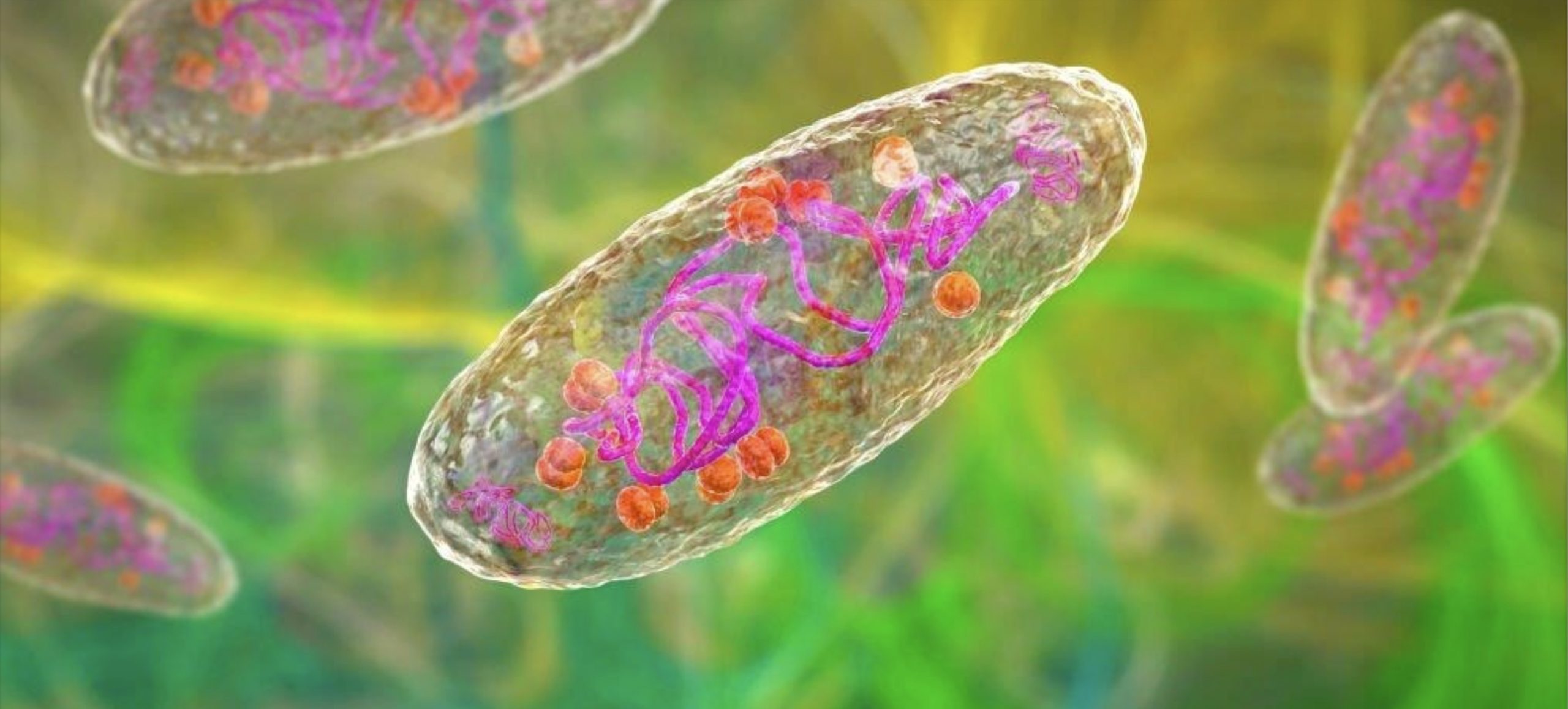
11 Oct Challenges and Opportunities in Plasmid DNA Manufacturing
Plasmids are naturally occurring parasitic extrachromosomal DNA elements that replicate inside microorganisms. They vary in size (some as small as a few thousand base pairs, while others are more than a million base pairs) and shape (some are linear while others are circular). Many of them have developed symbiotic relationships with their host organisms by encoding genes that provide a survival advantage to the host.
Apart from their fascinating biology, plasmids also serve a practical purpose within the biotechnology industry. Since the 1970s, scientists have used them as helpful vehicles to introduce and propagate foreign DNA inside microbes, a methodology that has spawned many different applications.
Plasmid construction through the years
1970s
During the late 1970s, scientists showed that you could coax microbes to produce foreign proteins by splicing a gene that encodes a protein of interest into a suitable plasmid, followed by the introduction of that plasmid into the host. The host dutifully followed the instructions provided in the plasmid-borne gene and started to produce that protein. This concept spurred the biotechnology revolution, leading to numerous proteins, natural products, and small molecules being produced by host organisms that had been programmed by engineered plasmids —a practice that continues in research labs around the world.
1990s
In the 1990s, plasmids played an essential role in the sequencing of the human genome. Fragments of human genomic DNA were introduced into plasmids, providing a convenient way to clone, isolate, propagate, and amplify different fragments of the human genome for sequencing.
2020s
Today, plasmids are gaining additional attention due to their critical role in the development and commercialization of modern cell and gene therapies, RNA therapeutics, and nucleic acid-based vaccines. These technologies all require large quantities of genetic constructs as inputs: DNA constructs that encode a correctly functioning gene for gene therapy applications where dysfunctional genes in cells are swapped out for functional genes; genes encoding highly engineered proteins designed to identify and destroy cancer cells as in the case of CAR-T therapies; or genes encoding an antigen for nucleic acid–based vaccines. In all of these cases, plasmids are the vehicle of choice for building, propagating, and scaling up these genetic constructs.
In the world of nucleic acid–based therapy development, there are two primary consumers of plasmid DNA constructs. First are those scientists involved in early R&D for new therapies. They may have hundreds or thousands of specific genetic designs that they would like to test on a small scale. They want to test as many hypotheses as possible to winnow down to the best designs for a potential therapy. Their material requirements are low enough that production runs can be performed in batch cultures in shake flasks or even deep-well plates, and the material can be purified using disposable, kit-based anion exchange columns. At the other end of the spectrum are the process development scientists who are tasked with scaling up a proven genetic design. Their goal is to manufacture a very small number of plasmids at very large scale to provide enough material for preclinical development and clinical trials. Their material requirements can be quite large (multiple grams) and, depending on the final application, GMP (or GMP-like) production is required. These processes are performed in large-scale bioreactors followed by a multi-step downstream process post cell lysis (typically anion exchange followed by HIC [hydrophobic interaction chromatography]), accompanied with rigorous analytical characterization to ensure compliance with internal quality parameters set by regulatory bodies or internal CMC (Chemistry, Manufacturing, and Controls) or QA (Quality Assurance) departments. In both cases, speed, cost, and reliability of the vendor to deliver material that meets the product specifications are critical factors.
Challenges Associated with Process Productivity and Yield
Unlike bioprocesses for producing proteins or small molecules, which can yield multiple grams of product per liter of culture, commercial plasmid production processes typically yield tens to hundreds of milligrams per liter of culture, depending on the scale and the process parameters (e.g., shake flask vs a fed-batch process in a bioreactor). When talking about a production process (whether at small scale or in a large reactor), we can measure the productivity of the process in multiple ways, each highlighting a different challenge to the process.
The easiest way to examine the productivity of a process is by volumetric yield (amount of plasmid produced per unit of culture volume).
The lower the volumetric yield, the larger the culture volumes that are required to achieve the desired amount of final product. This primarily impacts the upstream process work because it means that a low-yielding process needs to be scaled to higher volumes (often requiring larger flasks or bioreactors) or needs to be produced across multiple batches (which exhausts manufacturing capacity) to achieve the desired amount of final product. As demand for plasmid DNA increases, processes with low volumetric productivity severely constrain manufacturing capacity at production facilities, resulting in long lead times for customers. We’ve found that customers that order large production runs of plasmid DNA are routinely experiencing lead times of 4 to 6 months (and sometimes even more) just to secure a manufacturing slot at a reputable CDMO. Technologies that enable plasmid production processes with higher volumetric productivities would increase the available manufacturing capacity without requiring additional manufacturing infrastructure. For example, if a higher- yielding process could produce sufficient plasmid for early R&D in a single 500 mL shake flask instead of four 2 L shake flasks, you could fit more plasmid designs into a shaking incubator, thereby increasing your capacity to test new designs. The same logic holds for large-scale manufacturing, where smaller bioreactors are in greater abundance than very large reactors.
A second way to evaluate the productivity of a process is to look at specific productivity (the amount of plasmid produced per cell).
Lower specific productivity means a lower ratio of the desired product to all the other molecular species in the cell (genomic DNA, RNA, proteins, metabolites, etc.). A process with low specific productivity creates challenges for downstream processing teams because it means that a small amount of desired product needs to be isolated from all of the other “junk” in the cell. This is especially challenging for plasmid DNA purification because modern downstream processes for plasmid purification rely on generic chromatography processes that separate molecules based on general molecular properties. In this case there is an opportunity for host-related impurities to co-purify with the plasmid DNA (especially certain host proteins, genomic DNA, RNA, and endotoxins). Technologies that enable plasmid production with higher specific productivities would simplify downstream processes by adding more needles to the haystack, and reducing the amount of non-product material that goes through the downstream process.
Toxicity and Stability of Generic Constructs
As the genetic payloads that are being cloned into plasmids for cell and gene therapy, RNA therapeutics, or vaccines get more complex, the fidelity of the final product can be severely impacted. In these cases, the outcome is not just low yield/productivity, but the production of plasmids that contain undesired genetic modifications. When a genetic construct is toxic to the host (which is difficult to predict in advance), you may not be able to introduce the desired construct into the host at all. Even if you are able to, the host may mutate or modify the sequence to reduce the toxicity (good for the survival of the host, but bad for the scientist).
Other sequences, while not toxic, may be highly prone to recombination events. For example, plasmid designs for generation of viral vectors for gene therapy contain inverted terminal repeat sequences (ITRs), which are highly prone to recombination events that result in plasmid rearrangements or truncations. You may go through all the trouble to manufacture your plasmid, only to find that it no longer contains the desired genetic payload! Similarly, the long poly-A tails that are a typical design component of plasmids for manufacturing RNA therapeutics are highly unstable and prone to truncation. All of these introduce the risk that the desired plasmid may not be reliably manufactured, leading you back to drawing board.
The Way Forward for Plasmid Construction
In the world of protein production, there are a myriad host organisms that can be deployed. If a desired protein ends up being toxic to or poorly produced by one host, you can try another. There is a veritable zoo of bacterial, fungal, mammalian, and even human cell lines that have been engineered for use in protein production. When it comes to plasmid production, everyone is essentially still relying on the same E. coli strains that were in use in the 1970s. If a plasmid proves to be toxic or highly recombinogenic, there is very little that can be done to optimize production apart from redesigning the plasmid.
The aforementioned challenges highlight opportunities for innovation to improve plasmid production processes. At Novel Biotechnology, our thesis is that there is significant room for improvement when it comes to the host organisms that are used to produce plasmid DNA (at both large and small scale). E. coli has a storied career in biotechnology, but we believe that there are other organisms that may be better suited for plasmid production (offering higher productivities and yields, faster growth kinetics, higher stability of complex plasmids, and lower host-related contaminants such as endotoxins). One such host organism— the NBx Platform—is being actively developed at Novel Biotechnology, and has shown great promise in addressing the challenges discussed.

